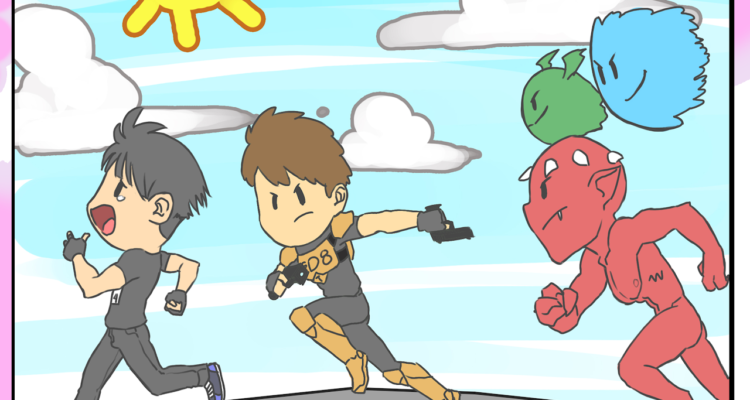Every newly diagnosed Person Living with HIV (PLHIV) has to absorb a wealth of information about their journey towards and in treatment. Among the multitude of terms to remember, most commonly used are “CD4 Count” and “Viral Load” but what do these terms really mean and how important are they to every PLHIV who are on Antiretroviral Therapy (ART)?
CD4 Count
CD4 cells (also known as T-cells, or T helper cells) are white blood cells that fight off infections that enter the body. Its main function is to send signals upon entry of a virus or bacteria to other types of immune cells, including CD8 cells to fight off the cells infected by bacteria and viruses.
Upon successful HIV transmission in the body, the virus enters the CD4 cells and replicates after which, new copies of the virus will then be released and attaches to other CD4 cells. This ultimately opens the body to possible opportunistic infections due to the continuous decline of the CD4 and CD8 cells.
CD4 count is tested upon HIV diagnosis to check the current state of the immune system. Likewise, CD4 Count serves as indicators of possible risk of opportunistic infections and advanced HIV infection. It remains as a vital test that can help HealthCare Providers (HCPs) in their decisions for empiric treatment, particularly for PLHIV with advanced HIV infection.
Below is a table showing the normal range of CD4 Count as well as PLHIV CD4 Count in cubic millimeter (mm3):

Factsheet CD4 Cell Count and
Consolidated Guidelines on the Use of Antiretroviral Drugs for Treating and Preventing HIV Infection Recommendations for a Public Health Approach (Second Edition 2016)
Since 2013, the World Health Organization (WHO) guidelines in administering ART to PLHIV has set the threshold to below 500 cells/mm3 for the start of ART, giving priority to those with advanced HIV infection or with a CD4 Count of below 350 cells/mm3. But in 2015, two large randomized controlled trials on the efficacy of ART at varying CD4 Count levels showed that starting ART, regardless of CD4 Count, has showed significant decline in the progression of the infection. Thus, WHO updated their guidelines in September 2015 to strongly recommend that all PLHIV should start with ART regardless of their CD4 Count and stop monitoring the CD4 Count of PLHIV who are already stable in their ART.
CD4 Count are measured prior to start of ART. Upon ART initiation, CD4 count monitoring could be done every 3 to 6 months or upon ART failure.
Viral Load
Viral load (VL) is the amount of HIV present in your blood. The higher the viral load, the quicker a person’s immune system will be damaged, increasing their risk of opportunistic infections. Also, viral load provides an early and more accurate indication of ART failure and the need for a change in ART combination, which also reduces the risk of drug resistance (HIV becoming resistant to the ART’s efficacy) among PLHIV.
Viral load of PLHIV should be monitored routinely at 6 and 12 months interval from initial HIV diagnosis and then every 12 months thereafter to ensure the stability of the ART and detect treatment failure earlier and more accurately. Monitoring PLHIV who are linked to care is important to ensure successful treatment, to identify adherence problems and to determine whether ART regimens should be changed.
ART failure occurs when the viral load of a PLHIV exceeds 1000 copies/mL based on two consecutive viral load measurements within a 3-month interval. Adherence support and counselling are needed following the first viral load test to prevent drug resistance.
An Undetectable viral load (less than 34 copies/mL) is the ultimate indication of ART’s effectiveness and is a goal that many PLHIV strive for. This is also crucial with the recent pronouncement of UNAIDS that PLHIV who adhere to their ART and have undetectable status can no longer transmit HIV. This means that ART adherence can be a way to stop the spread of HIV.
CD4 Count versus Viral Load
Upon start of treatment, ART suppresses the further replication of CD4 cells infected with HIV. Upon viral suppression, the immune system then has a chance to recover naturally and ultimately fight off any opportunistic infections attacking the body.
The graph below shows the correlation of CD4 cells and viral load before and after ART initiation. If a PLHIV does not start with ART upon diagnosis, the CD4 count decreases while the viral load continues to increase. Likewise, when ART has been initiated, CD4 count slowly increases while the viral load decreases. Hence, CD4 count has an inverse correlation with viral load.
Recent studies suggest that in situations where viral load testing is routinely available and individuals are virally suppressed (Undetectable), long-term CD4 Count monitoring adds little value and stopping CD4 Count for monitoring purposes will have major cost savings.
Below are the various CD4 Count and Viral Load Testing cost in selected hospitals / treatment centers:

CD4 Count and Viral Load testing are covered by the Outpatient HIV/AIDS Treatment (OHAT) Package of Philhealth per Philhealth Circular No. 011-2015. Per Department of Health Administrative Order No. 2014-0031, CD4 cell count is done to alert physicians if the ART regimen has no effect in immune recovery or potential adherence issues. Declining CD4 count can be used as basis for switching ART combination but the measurement has to be repeated which can be financially straining on PLHIVs. Also, where viral load monitoring is not available, clinical monitoring and CD4 monitoring are then recommended. A number of countries have either reduced the frequency of or stopped routine CD4 Count monitoring for PLHIV who are stable on ART and rely on viral load alone to monitor the response to ART and detect potential viral failure. As shown in the cost comparison table above, it is quite expensive to have regular CD4 Count monitoring on top of the viral load testing since the OHAT Package of Philhealth only covers the initial CD4 Count testing.
Whether CD4 Count or viral load is used as basis in monitoring ART effectiveness, it is also crucial to have a comprehensive and achievable adherence counselling for our PLHIV to empower them on their journey towards a stable immune status and long term HIV viral suppression.
For more information on HIV Treatment as well Life Coaching Services, you may visit LoveYourself Anglo and Victoria by LoveYourself.
Text by Ronald Bugarin
Illustrations by TJ Gellada Monzon
Storyboard by Franco Moje & Mark de Castro, inspired by the Japanese manga “Cells at Work”
References:
Undetectable = Untransmittable Public Health and HIV Viral Load Suppression
Consolidated Guidelines on the Use of Antiretroviral Drugs for Treating and Preventing HIV Infection Recommendations for a Public Health Approach (Second Edition 2016)
The Evolving Role of CD4 cell counts in HIV Care
Graph image from Wikimedia



